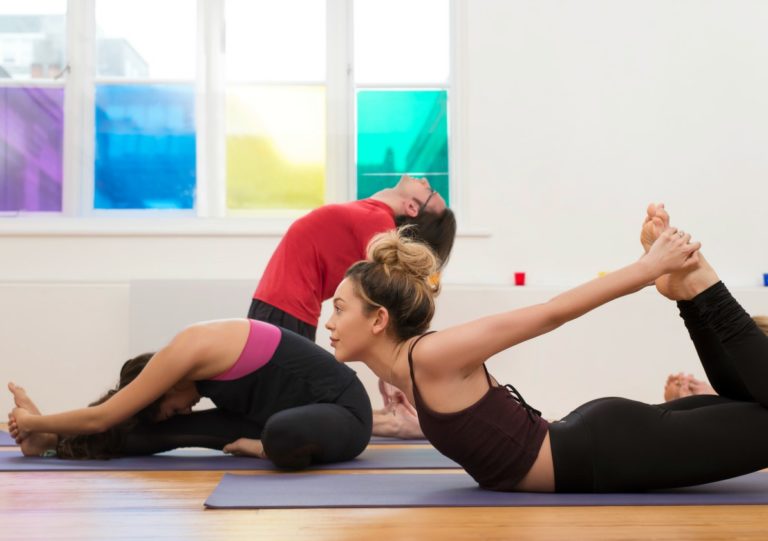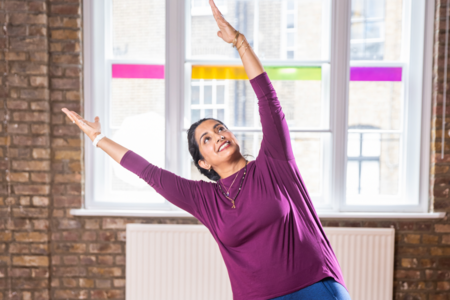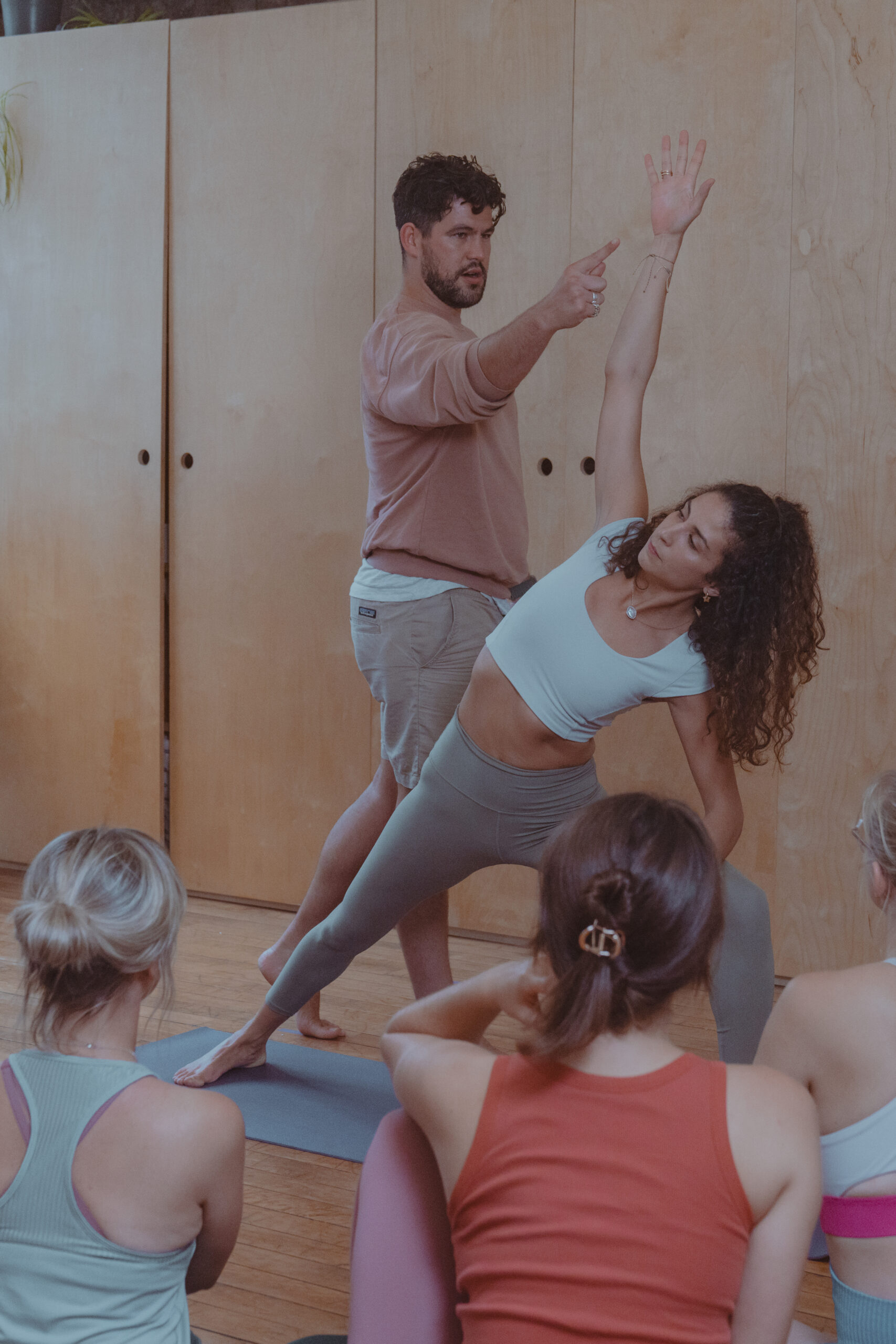In today’s fast paced society, it’s hard not to get swallowed up in the desire for an instant fix. We’ve heard that yoga might help us with our aches and pains, address our desk bound posture and offer precious glimpses of serenity to counter our busy and stressful days. Filled with good intentions we jump into a guided Ashtanga class and get put through our paces, often struggling to keep up and feeling a little overwhelmed by the people that surround us and seem to know exactly what they are doing. The good news is that the guided class isn’t the only place to learn Ashtanga yoga, and in fact it isn’t always the best way either.
Committing to learn a practice for the long-term is where the Mysore class begins to shine. Offering a breath of fresh air, it replicates a traditional learning environment similar to learning a language or instrument, but rather than beginning with basic vocabulary or scales we begin with breathing, essential technique and the fundamentals of Surya Namaskara (the sun salutations). The Ashtanga system is built upon the integrity and strength of these foundational principles, so it is worth digesting them slowly and deeply under the expert care of a teacher.
Shri. K Pattabhi Jois shared Ashtanga yoga with the first Western students in the 1960s and 1970s and since then yoga has continued to grow in popularity spreading rapidly through the West. Mysore, a city in the South of India where Pattabhi Jois established the Ashtanga yoga research Institute is also the adopted term used to describe practicing Ashtanga in a self-practice environment. Students commit the sequence to memory and move through their practice independently under the watchful eye of a teacher, just as those first Westerners did upon finding Pattabhi Jois and to continue to today in Mysore under the guidance of his grandson Sharath Jois.
“Anyone can practice. Young man can practice. Old man can practice. Very old man can practice. Man who is sick, he can practice. Man who doesn’t have strength can practice. Except lazy people; lazy people can’t practice Ashtanga yoga.”
This is the beauty of the Mysore method. All students learn the same sequence, but their starting point is unique and through learning step-by-step, progress happens naturally at a pace that is individually tailored to foster optimal growth. Up to the point of stepping on our mat for the first time, our bodies will have developed some form of postural imprint based on the demands of our daily existence. Particularly pertinent today is the need to address a desk bound posture that casts a heavy impression on the health of our spines, weighing on our breath and impacting on the favourable functioning of our internal organs and digestive system. The good news is, at a clever, steady and individual pace, the Ashtanga system is liberating for the body and begins to address these difficulties and more through semi-private instruction from a teacher within the inspiration of a dynamic group environment.
What to expect?
Your first class will normally cover the essentials of the Ashtanga method and provide clear guidance on breathing and coordinating the breath in sun salutations A and perhaps B, followed by seated finishing poses and rest. The teacher will guide you through the postures in a way that helps and encourages you to feel empowered to practice independently. In the beginning, memorising the sequence can be one of the most challenging aspects, but there is no rush, the student takes as long as they need and the teacher is on hand to skilfully provide as much (or as little) help as is required. Aside from physical benefits, practising in this manner inspires your concentration and focus improves rapidly.
Generally the first session lasts around 30 – 45 minutes and the following sessions will build on this organically by slowly adding standing postures one by one at a pace appropriate to the individual. In the early stages the teacher will provide verbal instruction and perhaps some demonstration to help clarify the learning but as the student becomes more competent the teacher’s input will become more subtle including gentle physical adjustments to correct and aid alignment and development of the postures. As the teacher’s input becomes more discerning, the student can begin to move through their own supported journey that explores the scope of yoga through the physical, mental, psychological and spiritual insights and gifts offered.
When starting out, the student may notice their mind-body connection is a little under utilised as it hasn’t been exercised recently and is required to absorb lots of new information. Try not to feel disheartened, it doesn’t take long for the postures to start falling in to place and normally after three to five sessions the student starts to feel more comfortable retaining the sequence in memory and to delight in moving as their own pace in accordance with their own rhythm. Regular attendance really aids this process and the teacher’s role is to see each student’s potential with fresh eyes and to encourage them to develop accordingly.
The benefits
Our experience on the mat becomes our compass for daily living. We greet the dawn and by servicing our body and mind first thing each day we enter into our experiences with much more clarity. By learning a designated sequence we are gifted with the opportunity to observe ourselves and the nature of impermanence and change each day. Our progress can be well measured but perhaps our doubts and boredom become more obvious too.
Although challenging, stepping on the mat and looking within on a regular basis promotes heightened awareness, acceptance, understanding and compassion. With time practice becomes an essential beginning to our day. Intimate time spent with our bodies, minds and hearts first thing allows the rest of our day to take shape more mindfully. Engaging in a silent and thoughtful practice honours and embraces our individuality whilst empowering our sense of community to live vibrantly with others. Our struggles are universal and coming together can provide a great deal of healing. Through continued practice the gift of presence starts to unravel, bringing joy and sweetness to all that follows.
Zephyr teaches Mysore-style Ashtanga from 6.00am in Ealing, Monday through Saturdays. She also teaches a led Ashtanga class on Wednesdays at 1.15pm and on Saturdays at 10.15am in Ealing. Additionally she teaches an Ashtanga Techniques class on Fridays at 7.30pm in Ealing.










